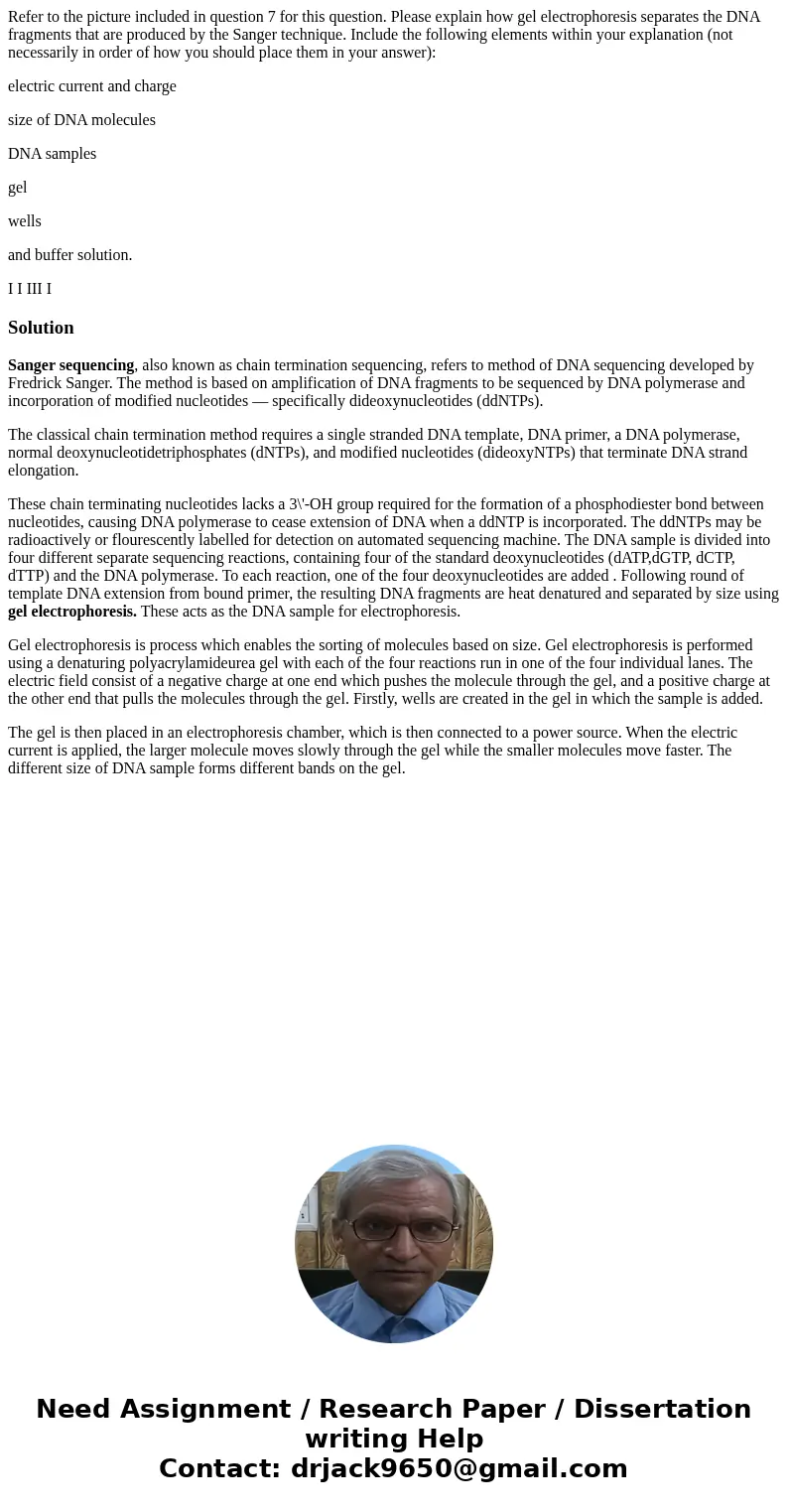Refer to the picture included in question 7 for this questio
Refer to the picture included in question 7 for this question. Please explain how gel electrophoresis separates the DNA fragments that are produced by the Sanger technique. Include the following elements within your explanation (not necessarily in order of how you should place them in your answer):
electric current and charge
size of DNA molecules
DNA samples
gel
wells
and buffer solution.
I I III ISolution
Sanger sequencing, also known as chain termination sequencing, refers to method of DNA sequencing developed by Fredrick Sanger. The method is based on amplification of DNA fragments to be sequenced by DNA polymerase and incorporation of modified nucleotides — specifically dideoxynucleotides (ddNTPs).
The classical chain termination method requires a single stranded DNA template, DNA primer, a DNA polymerase, normal deoxynucleotidetriphosphates (dNTPs), and modified nucleotides (dideoxyNTPs) that terminate DNA strand elongation.
These chain terminating nucleotides lacks a 3\'-OH group required for the formation of a phosphodiester bond between nucleotides, causing DNA polymerase to cease extension of DNA when a ddNTP is incorporated. The ddNTPs may be radioactively or flourescently labelled for detection on automated sequencing machine. The DNA sample is divided into four different separate sequencing reactions, containing four of the standard deoxynucleotides (dATP,dGTP, dCTP, dTTP) and the DNA polymerase. To each reaction, one of the four deoxynucleotides are added . Following round of template DNA extension from bound primer, the resulting DNA fragments are heat denatured and separated by size using gel electrophoresis. These acts as the DNA sample for electrophoresis.
Gel electrophoresis is process which enables the sorting of molecules based on size. Gel electrophoresis is performed using a denaturing polyacrylamideurea gel with each of the four reactions run in one of the four individual lanes. The electric field consist of a negative charge at one end which pushes the molecule through the gel, and a positive charge at the other end that pulls the molecules through the gel. Firstly, wells are created in the gel in which the sample is added.
The gel is then placed in an electrophoresis chamber, which is then connected to a power source. When the electric current is applied, the larger molecule moves slowly through the gel while the smaller molecules move faster. The different size of DNA sample forms different bands on the gel.

 Homework Sourse
Homework Sourse